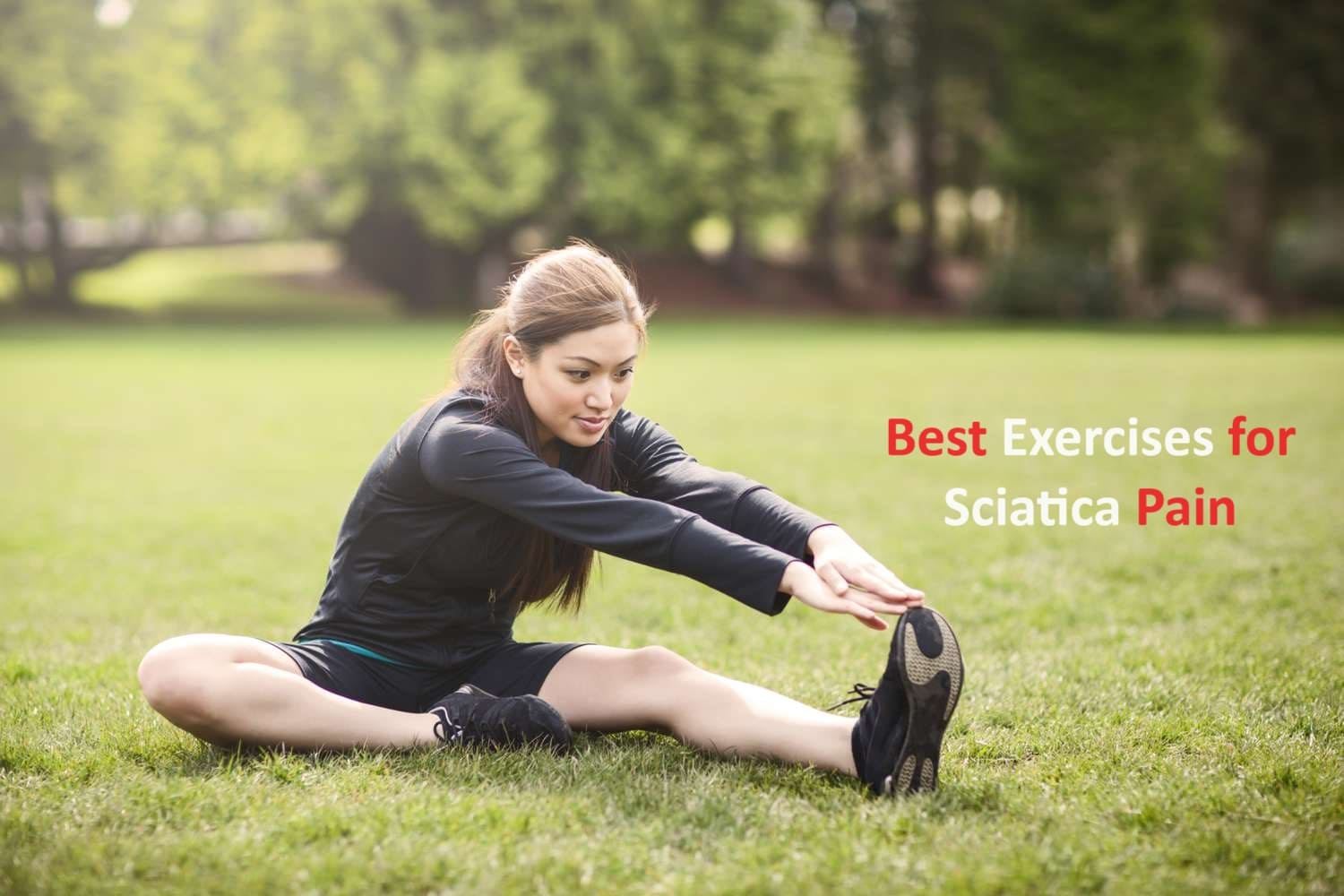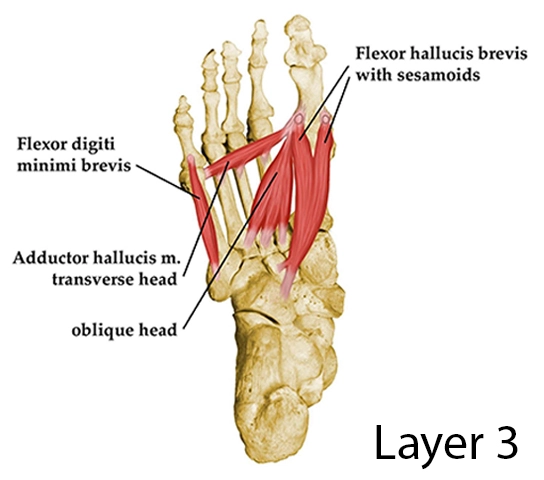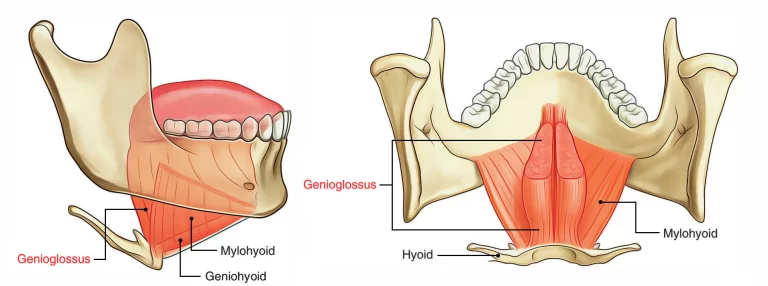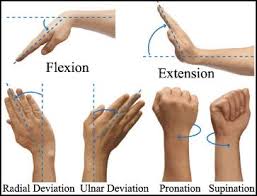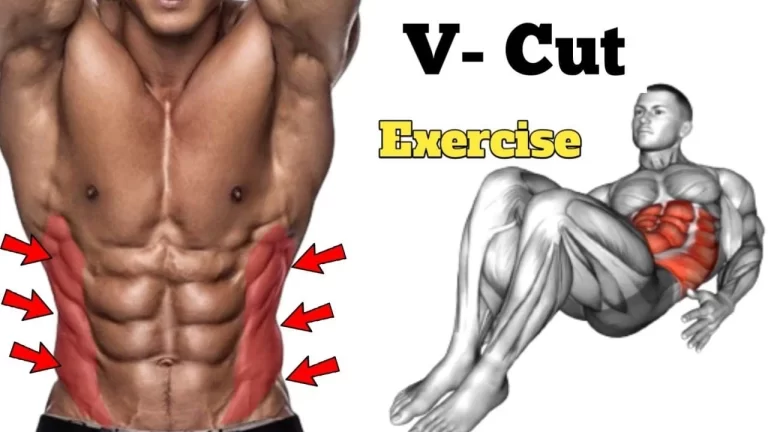20 Best Exercises for Sciatica Pain
Sciatica pain can be excruciating, often radiating from the lower back down through the buttocks and legs. It occurs when the sciatic nerve, which runs from the lower back through the hips and down each leg, becomes irritated or compressed. This condition can be caused by various factors such as a herniated disc, spinal stenosis, or even something as simple as poor posture.
Certain exercises & stretches may assist relief of pain, decrease tightness, & speed recovery in people with sciatica. Most cases of sciatica recover in about 4–6 weeks. However, some exercises & stretches may assist the healing process while also relieving pain.
The following mentioned exercise helps to increase strength & flexibility in the gluteus, piriformis, hamstring, & lower back muscles.
A person is likely to get the best results from performing these exercises regularly. However, not & everyone will definitely find all of the exercises assist because individual causes of sciatica affect the sciatic nerve differently.
It is important to note that while exercises should cause a stretch & tension in the area, they shouldn’t increase pain or cause new pain.
What is Sciatica?
Sciatica is the term used to describe leg pain, tingling, weakness, or numbness. It is caused by injury to or pinch on the sciatic nerve. Sciatica is a symptom of a medical issue. It isn’t a medical condition by itself.
Living with sciatica pain can significantly impact your quality of life, making everyday activities challenging and uncomfortable. While medications and other treatments can provide relief, incorporating specific exercises into your routine can also play a crucial role in managing and alleviating sciatica pain.
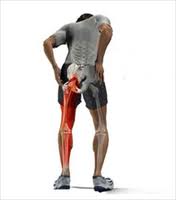
Medical Treatment of Sciatica Pain
Most patients better over time with conservative treatment including exercise, manual therapy, & pain management.
Pain Medication
Short course of oral NSAIDs; Opioid & non-opioid analgesics; muscle relaxants; anticonvulsants for neurogenic pain; localized corticosteroid injections.
Surgical evaluation
Structural abnormalities such as disc herniation, epidural hematoma, epidural abscess, or tumor may be considered if no achievement following 6-8 weeks of conservative treatment. One study found that although it may speed up healing, the effect is similar to conservative care for 1 year.
Home Care in Sciatica Pain
Promote self-management techniques such as:
- Use of hot packs or cold packs for comfort & to reduce inflammation
- Avoidance of inciting activities or prolonged sitting/standing
- Regularly changing position i.e. from sitting to standing
- Practicing good erect posture
- Use of proper lifting techniques
Physical therapy Treatment
Physical therapy is a non-surgical treatment for sciatica pain, the goal is to offer relief by removing the pressure or pinch from the nerve by using a variety of techniques & exercises to decrease muscle spasms, & pain & accelerate back range of movement & core strength.
Electrical modalities, exercises (strengthening, stretching, and aerobic conditioning), muscular energy techniques, spinal stabilization, mobilizations, nerve slides, glides, etc. are all used in the physiotherapy treatment of sciatica.
Cryotherapy:
Ice packs or other cold options are trying to relieve the pain of sciatica. Ice can be applied for about 8-10 minutes every two hours, but do not allow an ice pack to directly touch the skin wrapped in the towel.
Thermotherapy:
Heating pads or a warm bath can be taken for at least 15-20 minutes, but no longer than a couple of hours. Heat therapy accelerates blood circulation & causes a reduction in pain, accelerates relaxation, & accelerates flexibility.
Ultrasound Therapy:
Ultrasound therapy is used to decrease irritation & stress of the nerve.
Transcutaneous Electrical Nerve Stimulation:
Transcutaneous Electrical Nerve Stimulation is also used to relax sciatic pain. The two electrode pads are applied to the sciatic nerve roots’ skin, and a tiny current is run through them to cause tingling.
Sciatic pain can be relieved using interferential therapy; two electrodes are positioned at the nerve roots, while the other two electrodes are positioned at the foot or leg, it is initiated to be highly effective for sciatica.
Shockwave Therapy:
Extracorporeal shock wave therapy (ESWT) is a non-invasive treatment that assists in relieving the pain of peripheral nerve damage, promotes local arterial remodeling & cellular regeneration, & also reduces muscle tone.
Lumbar Traction:
Lumbar traction assists in relieving pressure or pinch on sciatic nerve roots, thus relieving pain, & is widely used by Physiotherapists for sciatica.
Goals of Physical Therapy & Exercise in Treating Sciatica
Physical therapy & exercise assist in strengthening & mobilizing tissues in the lower back, pelvis, abdomen, buttocks, & thighs.
The goals of physical therapy & exercise in managing the signs & symptoms of sciatica are to:
- Restore pain-free functional motion patterns
- Reduce pain in the legs, buttocks, thighs, and lower back
- Decrease muscle spasm
- Restore the function of the lumbar spine & the sacroiliac joint
- Increase mobility of the lower body
- Foster a better recovery environment in the lower back
- Promote neurologic adaptations to decrease the perception of pain
- Prevent future pain flareups & decrease fear associated with motion
- Commitment & frequency are important attributes of a successful treatment outcome when using physiotherapy & exercise for sciatica. Physiotherapy may or may not be combined with prescription or over-the-counter drugs, as well as epidural steroid injections, to relieve pain.
Best Exercises for Sciatica Pain
It is most important to note that the less active the person is, the firmer their muscles become. The physical therapist can provide an appropriate exercise routine that suits a person’s specific helps.
The physical therapist recommends supervised exercise therapy including spinal mobilization, motor control exercise, and nerve mobilization. Mobilization & manipulations are therapies performed by Physical therapists to improve the range of movement & lumbar function in patients with sciatic pain.
Stretching Exercises:
Rules for Proper Sciatica Stretches
There is a double of things that people hurting from sciatica pain should memorize. For instance:
Before stretching, you should at all times warm up to let the blood flow through your lower back muscles. Keep away from stretches that rotate the torso or require you to flex. Stop when you experience resistance, do not force a stretch. Pain is an indicator that you help to stop.
By just following these 4 simple rules, you will already be on the right path to keep yourself safe while exercising. Specific stretching exercises you need to try out 1 are:
- Single knee to the chest
- Piriformis stretches
- Supine hamstring stretches
- Double knee to the chest stretch
When done right side, these stretches can be fast and effective & get ready you to do the intended activity as pain-free as possible.
Stretching exercises are suggested to target cells causing discomfort when they are firm & tight. Most people do not stretch those muscles, which stretch from the pelvis to the knee joint at the back of the thigh, in their everyday pursuits.
Examples of Sciatica stretching exercises are hamstring stretching exercises and transversus abdominis, knee-to-chest stretch, supine piriformis stretch, back extension, and sitting spinal stretch.
In this guide, we will explore a range of exercises designed to target the muscles and structures that may be contributing to your sciatica pain. These exercises aim to stretch and strengthen key areas of the body, alleviate pressure on the sciatic nerve, and improve overall flexibility and mobility.
Early-stage Sciatica relief exercises/stretches
Seated glute stretch

In the seated glute stretch, you sit cross or blend-legged.
Sit on the floor with your legs stretched out erect in front of you.
Flex your right leg, putting your right side ankle on top of the left side knee.
Let your upper body extend toward your thigh as you bend forward.
Hold for 20-30 seconds. This stretch is more important to the glutes & lower back.
Repeat on the other side.
Sitting Spinal Stretch

In the sitting spinal stretch, & rotate to your side to assist in relief of pressure on the sciatic nerve.
Sciatica pain is triggered when vertebrae in the spine pressure. This stretch helps release pressure from the sciatic nerve by making room in the spine.
Sit on the ground with your legs extended erect out with your feet bent upward.
Flex your right side knee & place your foot flat on the floor on the outside of your opposite side knee.
Place your left side elbow on the outside of your right side knee to assist you in gently rotating your body toward the right side.
Hold for 20-30 seconds & repeat 3 times, then switch other sides.
Basic Seated Stretch
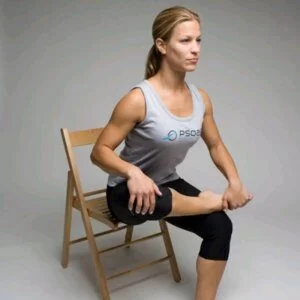
While stretching each side leg in the basic seated stretch, remember to keep your back erect or straight.
To begin this stretch, take a seat in a chair and blend or cross the leg that hurts over the knee of the other leg. Then follow these steps:
Flex forward with your chest & try to hold your spine erect. As long as it is not painful, try to flex over a bit more. Stop if you experience any pain.
Keep this position for 20-30 seconds & repeat the exercise with the other side leg.
Figure 4 Stretch

The figure-4 stretch can assist stretch the piriformis muscle.
The figure-4 stretch can assist you open your hips. There are multiple versions of this stretch, but to relieve sciatic nerve pain, you can follow these directions:
Lie flat on your back & flex both your knee joints.
Cross your right side foot over your left side thigh, moving your legs up toward the torso.
Hold the position for a motion & then repeat on the other side
It is important not to force this stretch. Instead, to get a deeper stretch, let gravity or a downward force naturally guide your legs closer to your body.
Knee to the opposite shoulder
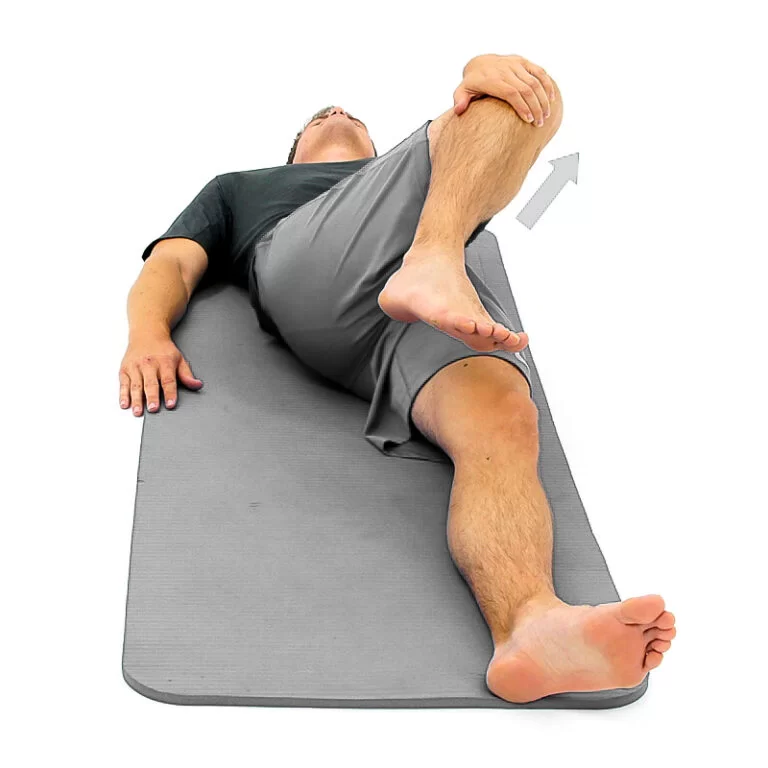
The knee joint to opposite side shoulder joint stretch is done while lying flat surface on your back.
This simple stretch assists in relieving sciatica pain by loosening your gluteal & piriformis muscles, which can become inflamed & compress against the sciatic nerve.
Lie on your back with your legs extended or straight, & your feet flexed upward.
Flex your right side leg & grasp your hands around the knee joint.
Gently pull your right side leg across your body toward your left side shoulder. Hold it there for 20-30 seconds. Remember to pull your knee joint only as far as it will comfortably go. You should experience a relieving stretch in your muscle, not pain.
Push your knee joint, so your leg returns to its starting relaxed position.
Repeat for a total of three reps, then switch legs.
Forward pigeon pose
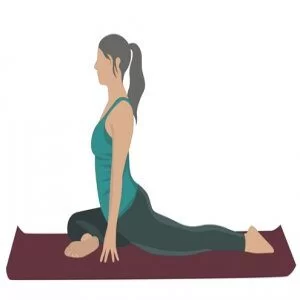
Starting this version of the pigeon pose by getting on your knee joints on the floor, facing down.
Kneel on the floor on all fours limb.
Pick up your right side leg & move it forward on the ground in front of your body. Your lower side leg should be on the ground, & parallel to the body. Your right side foot should be in front of your left side knee while your right side knee joint stays to the right side.
With the first foot on the ground and centered behind the toes, stretch the left leg all the way to the floor. Focuses on the back of the foot and toes on the ground. Move your body weight gradually from your arms to your legs so that your legs are supporting your weight. Sit up erect with your hands on either side of your legs.
Take a deep breath. While exhaling, bend your upper body forward over your front side leg. Assist your weight with your arms as much as possible.
Repeat on the other side.
Standing hamstring stretch
To do the standing hamstring stretch, start by standing, & place your right side foot on a higher surface, like a chair.
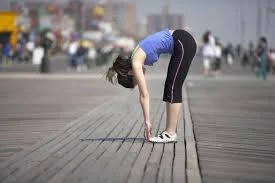
This stretch can assist relief of pain & tightness in the hamstring caused by sciatica.
Place your right side foot at or below your hip level on an elevated surface. This might be a stairway step. Bend your foot, so your toes & leg are erect. If your knee joint tends to hyperextend or straight, & keep a slight flex in it.
Flex your body forward slightly toward your foot. The further you go, & the heavier the stretch. Do not push so far that you experience pain.
Instead of lifting your lifted leg higher, let go of its hip. Use a yoga strap or a long exercise & Flex to loop over your right thigh and under your left foot if you need help loosening your hip joint.
Hold for at least 20-30 seconds, & then repeat on the other side.
Standing piriformis stretch
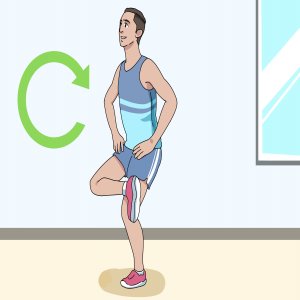
You can clasp your hands on your hips for more balance while in the standing piriformis stretch.
This is another standing stretch that can assist with sciatica pain. You can do this without support if you are able, or you can stand against a wall & place your feet about 24 inches from the wall.
Put your painful leg over the knee joint of your other leg while standing. With your hips dropped to the floor at a 45-degree angle, flex your standing leg and attempt to form the number 4.
Flex your waist & swing your arms while holding your back erect. Stay in the position for 20-40 seconds.
Switch legs & repeat.
Scissor hamstring stretch
You can lessen the strain that the hamstring muscles put on the sciatic nerve by bending downward in a scissor hamstring stretch.
The ischial tuberosity, also known as the sit or sit bones, starts at the ischium, which is one of the parts that make up the pelvic girdle along with the ilium & the pubis.
The hamstring muscles connect to the ischial tuberosity via the sacrotuberous ligament. When they are hard, hamstring muscles may mimic sciatica symptoms.
By isolating those hamstring muscles, this stretch can help release strain on the sciatic nerve.
Place your right side foot about three feet behind your left side foot.
Pull your hips forward & push your shoulder joints back, but your right side hip should not be farther forward than your left side hip. A mirror may assist make a judgment on this.
Put your hands on your hip joints. You may use a chair for balance if you want it.
Push your torso a bit over your front leg by flexing your waist while keeping your back correct. Keep your weight on your front side leg.
Keep this position for five to ten seconds, & then repeat the stretch with the opposite side leg. Do the stretch for each leg three to five times.
Range of motion exercise (mobility exercise)
Actively assisted range of motion includes a physical therapist-assisted range of motion of the lower body, such as the hip and leg. This technique helps ease the movement of specific joints or muscles that cause pain.
While this list is not exhaustive, physiotherapists commonly use one or more of these treatments for sciatica pain. If a particular exercise or therapy causes pain or discomfort, he suggests informing the treating physician immediately.
Pelvic Tilt Exercise
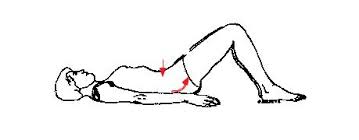
As the foundation of many exercises for relieving sciatica pain, the pelvic tilt helps to strengthen the abdominal muscles, so doing this exercise correctly is an excellent place to start. To perform the pelvic tilt lie on your back with your knee joints flexed & feet flat on the ground, & pull your belly button in on the way to your spine.
As you are pulling your belly button in, & your back will immediately flatten on the way to the floor & your pelvis will roll up on the way to your chest. Hold this relaxed position for 20 to 30 seconds, & then relax. Aim to complete eight to ten repetitions of this exercise.
Press-Up Exercise

Extension exercises or press-ups are often suggested to treat sciatica pain from a lumbar herniated disc. Using a physiotherapy method known as centralization, press-ups help transfer discomfort from the legs up to the lower back, where it originates and is easier to treat. To do a basic press-up, lie on your stomach & slowly elevate your upper body onto your hands with your hip joints on the floor.
Hold this position for five seconds & then lower your upper body back to the ground. Aim to complete eight to ten repetitions every few hours, gradually working up to 20 seconds per repetition. If this exercise is painful, & start by propping your upper body on your elbow joints for a gentler extension.
Straight Leg Raise Exercise

The straight leg raise exercise assists to strengthen the abdominal muscles & prevent a repeat of sciatica. Start the straight leg raise by lying on your back, flexing your knee joints, and drawing your belly button toward your spine to create a pelvic tilt.
Straighten one leg out along the floor & gently elevate it six to eight inches off the ground, before returning it to the ground. Aim to complete eight to ten repetitions before repeating with the other leg.
Back Flexion Exercise

Flexion forward bending exercises can connect to treat sciatica from spinal stenosis by increasing the size of the passageway of the pressing nerve. To perform a back flexion exercise, lie on your back with your legs relaxed flat on the ground.
Gently pull your knee joints to your chest until you experience a comfortable stretch across your lower back. Hold the stretch for 20 seconds, & then slowly lower your legs back to the starting position. Aim to complete four to six repetitions of this exercise.
Hook-Lying March Exercise
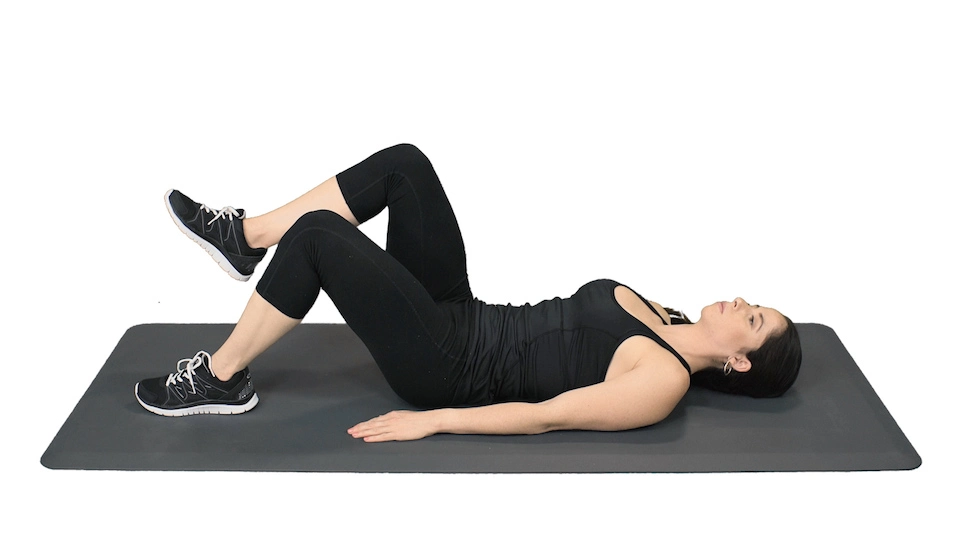
The hook-lying march is an active lumbar stabilization exercise. These exercises are often used by physiotherapists to assist prevent lower back pain by strengthening the muscles that support the spine.
To perform the hook-lying march, start by performing a pelvic tilt. Lie on your back with your knee joints flexed & press your lower back into the floor by tightening your lower stomach muscles.
Slowly alternate elevating one foot at a time an inch or two off the ground. Continue “marching” this way for 20 seconds. Perform 2 to 3 repetitions, resting for 20 seconds in between each repetition.
Bridging Exercise
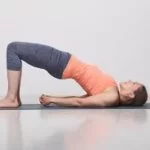
Bridging is another dynamic lumbar stabilization exercise that assists in strengthening the muscles that support the spine. To perform the bridging exercise, lie on your back with your feet flat, knee joints flex, & your arms on the floor beside you.
Slowly elevate your buttocks six to seven inches off the ground. Hold this bridge position for eight to ten seconds, & then slowly lower your buttocks back to the starting relax position. As your strength builds, aim to complete 2 sets of ten bridges.
Prone Leg Exercise
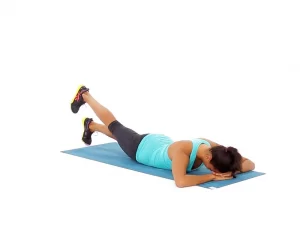
The prone leg exercise assists in easing sciatica by training the body to maintain a relaxed posture for the lumbar spine & pelvis. To carry out the prone leg exercise, lie on your stomach with your arms at your side palms facing the sky.
Pull your belly up on the way to your spine, & keeping your legs erect, slowly alternate elevating one leg at a time about an inch or 2 off the ground. If this exercise is too difficult or hard, & you can make it easier by placing your fists underneath the front of your pelvis.
Abdominal Curl-up Exercise
One of the most common exercises that may be suggested to strengthen the lower abdominal muscles & reduce sciatica pain is abdominal curl-ups. To perform an abdominal curl-up, lie on your back, & fold your arms across your chest, & perform a pelvic tilt by tightening your lower abs.
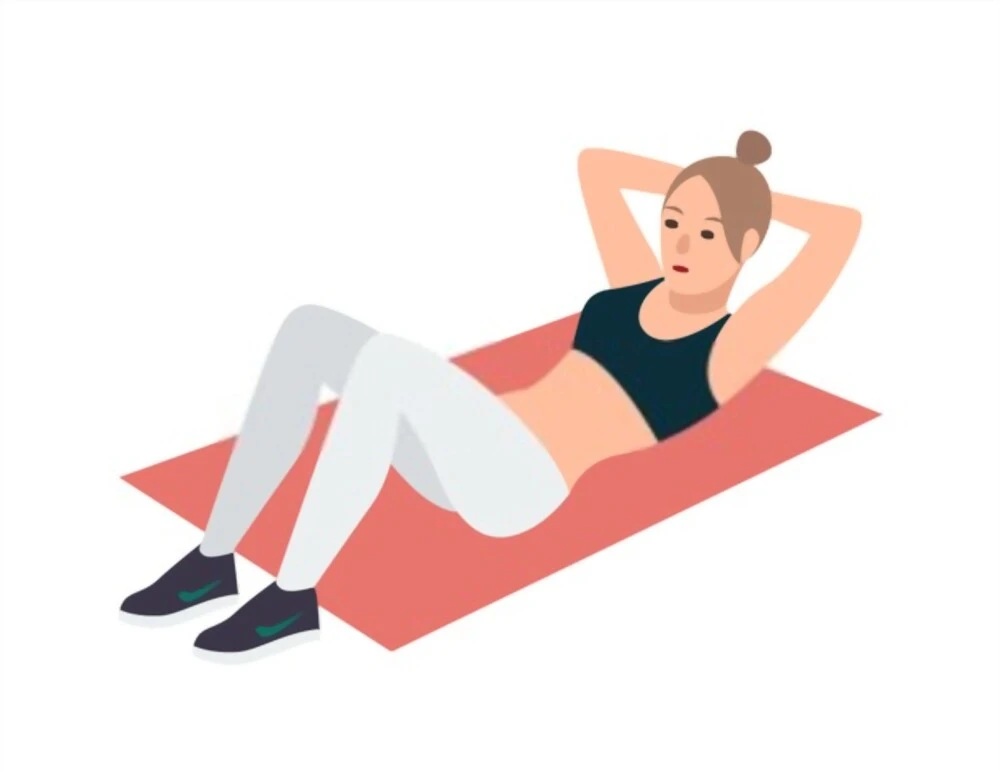
Elevate your head & shoulder joints from the ground on the way to the ceiling. Hold this position for two to four seconds & then slowly lower your upper body back to the ground. If performing the curl-up results in neck pain, & place your hands behind your head to support your neck, & but be sure not to elevate your head with your hands. Aim to complete two sets of 8-10 curl-ups.
Buttocks Stretch
If sciatica is caused by an injury or irritation to the piriformis muscle, stretching the piriformis muscle can assist in increasing pain & other symptoms. There are several piriformis muscle stretches that may be utilized to manage sciatica. To perform the buttocks stretch, starting on all fours.
Place your injured foot across & underneath your body so that your knee joint is facing away from the body. Extend your non-injured leg behind you, making sure to keep your pelvis erect. Keeping the injured side leg in place, scoot your hip joints on the way to the floor & lean forward onto your forearms until you experience a deep stretch in the hip joint & buttock.
Hold this stretch for 20-30 seconds & then slowly return to the starting relax position. Aim to complete three repetitions of this stretch.
Knee to chest
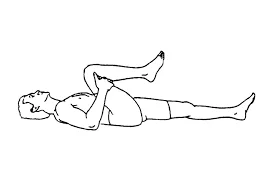
This motion involves the following steps:
Lie on the back with the legs flexed so that the knee joints point ascending & the feet are flat on the floor.
Bring one knee joint to the chest, leaving the other side foot resting on the floor.
Hold the knee joint to the chest for up to 20-30 seconds or however long is comfortable & relax.
Slowly release the leg & repeat the process with the other side leg.
Aim for three repetitions on each leg. This stretch can also be modified by bringing both legs to the chest and holding them there for 20 to 30 seconds.
Child’s Pose
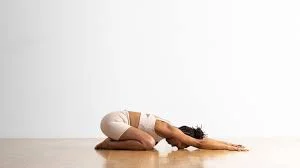
This pose, which is also popular in yoga, requires the following steps:
Begin in a kneeling starting position, & lowering the buttock onto the heels.
Disparate the knee joints about as far apart as the hip joints & lie the torso down between the thighs.
Extend the arms in a relaxed starting position on the floor in front of the head.
Breathe into the position to relax. Do not force the buttocks on the heels, and allow them to relax into a position that creates a gentle stretch.
Hold the position for 20-30 seconds before gently releasing if possible.
Strengthening Exercise
Strengthening exercises assist in building muscles to prevent or decrease sciatic pain. The back & the core muscles are important for maintaining proper posture & body alignment.
When patients take part in regular or systematic mild exercises, they can recover quickly from sciatica pain &, are not as likely to have future repeat of pain. E.g. Abdominal strengthening, iliotibial band strengthening, cat & camel exercise, bridging, etc.
Extension & flexion back exercises assist relieve pain by promoting motion of the spine. Often, individuals with lower back pain & sciatica experience relief with specific directional motion of the spine. A physical therapist typically evaluates an individual’s directional preference before prescribing specific directional exercises, as these are tailored to the individual patient & symptoms.
These exercises include backward (extension) & forward (flexion) bending. This directional motion is an important component of the McKenzie Method, also known as mechanical diagnosis & therapy (MDT).
The McKenzie Method (mechanical diagnosis & therapy) is a technique that involves a series of active directional motions to identify & treat a pain source in the spine, muscles, &/or joints. The method focuses on using movement to bring the pain that is radiating closer to the center of the body.
For example, leg pain can be brought closer to the spine. The theory of this approach is that centralizing the pain indicates improvements or increases in symptoms. The goal is to decrease radiating symptoms originating from the spine. A therapist with specialized training in the McKenzie Method typically uses this technique.
McKenzie Method for Mechanical Low Back Pain
Strengthening exercises include bodyweight & resistance exercises to strengthen the muscles of the abdomen, lower back, hips, & legs.
In isometric workouts, joints are not moved while muscles are contracted. Examples of isometric exercises involve a plank or a bridge hold. These exercises can assist in strengthening muscles when symptoms are more acute.
Isotonic exercises that involve muscle contraction to resist a constant load, such as resistance bands and weight training, help improve muscle strength through constant resistance to specific movements.
Functional retraining includes rehabilitating motions, such as lifting, carrying, & bending, or squatting. The need for correct technique & healthy motion patterns are incorporated to decrease pain & prevent re-injury.
Nerve Glides involve active or passive techniques on the symptomatic nerve while it is in motion and under tension to reduce symptoms and calm it down.
Joint mobilization is a manual therapy technique in which the therapist applies pressure to a joint to mobilize it & produce a therapeutic effect.
Joint manipulation is a manual technique in which the therapist applies a quick, thrust force at the end range of movement of a joint to promote pain relief & restore normal motion.
Dry needling is a technique in which a certified healthcare provider or physical therapist needs a small needle to target a trigger point in a muscle. This technique is performed to release hyper-irritable &/or hyper-contracted muscle tissue to decrease pain.
Muscle energy technique is a form of manual therapy that involves the patient performing gentle muscle contractions in conjunction with the physical therapist moving the painful joints through a specific range of movement. This technique may assist decrease pain & restore function.
The therapist can treat fascial impingement by mobilizing the lower back, hips, or legs using their hands or an instrument in myofascial release and soft tissue mobilization (underlying soft tissue) restrictions & reduce muscle tension or spasm.
Gait training includes analysis of walking technique & retraining correct gait patterns.
Aerobic conditioning Exercises:
Aerobic exercises like swimming, walking, or running encourage the flow of fluids & nourishment to assist make a greater recovery environment. Another benefit of aerobic training is that exercise releases endorphins, which are the body’s natural analgesics and will help lessen sciatica.
By incorporating these exercises into your daily routine and maintaining consistency, you may experience significant improvements in your sciatica symptoms, allowing you to reclaim your comfort and mobility.
Sciatica Exercises to Avoid
There are some exercises that can further injure sciatica, which is why you want to keep away from them as much as possible. Simply put, these are the exercises that include:
Lifting both legs off the ground High impact training Squatting Twisting or rotating the torso Bending forward (flexing) with straight or erect legs
This means that the increased sciatica exercises are definitely:
Double leg lift Leg circles Bent-over row Forward bends
Stated differently, anything that exerts additional pressure on the lower back may exacerbate or worsen sciatica. Even while it can be challenging to stretch correctly without performing any of the movements mentioned above, doing it incorrectly can result in sciatic nerve pain.
In order to release pressure on the nerve, the physiotherapist suggests pillows and supportive equipment such as:
- Foam Rolling
- Leg Elevation Pillow
- Sleeping Pillow
- Sturdy Back Brace
- McKenzie Lumbar Roll
- Wearable Relief.
The physiotherapist advises the person to reduce weight because the extra weight in the core area adds more pinch to the spine, thus incorporating more vegetables & lean meats into the diet, & improving exercise to lose the extra weight, which can assist reduce sciatica pain.
Be Active:
The person is also suggested to be active instead of enduring in the bed or relaxing in a chair, this can flare up sciatica pain. Though initially resting or relaxing for the first few days after sciatica pain develops is fine, remaining sedentary does more harm than good. Moving around assists improve blood flow, strengthens the muscles, increases flexibility, & reduces the perception of pain.
Always consult your physical therapist before doing the exercises, as some individuals with sciatica experience better with exercises of a back extension posture, whereas others may experience better by doing forward flexion.
Before starting any exercise program for sciatica pain relief, it’s essential to consult with a healthcare professional, especially if you’re experiencing severe or persistent symptoms. Additionally, listen to your body and proceed cautiously, avoiding any movements that exacerbate your pain.

